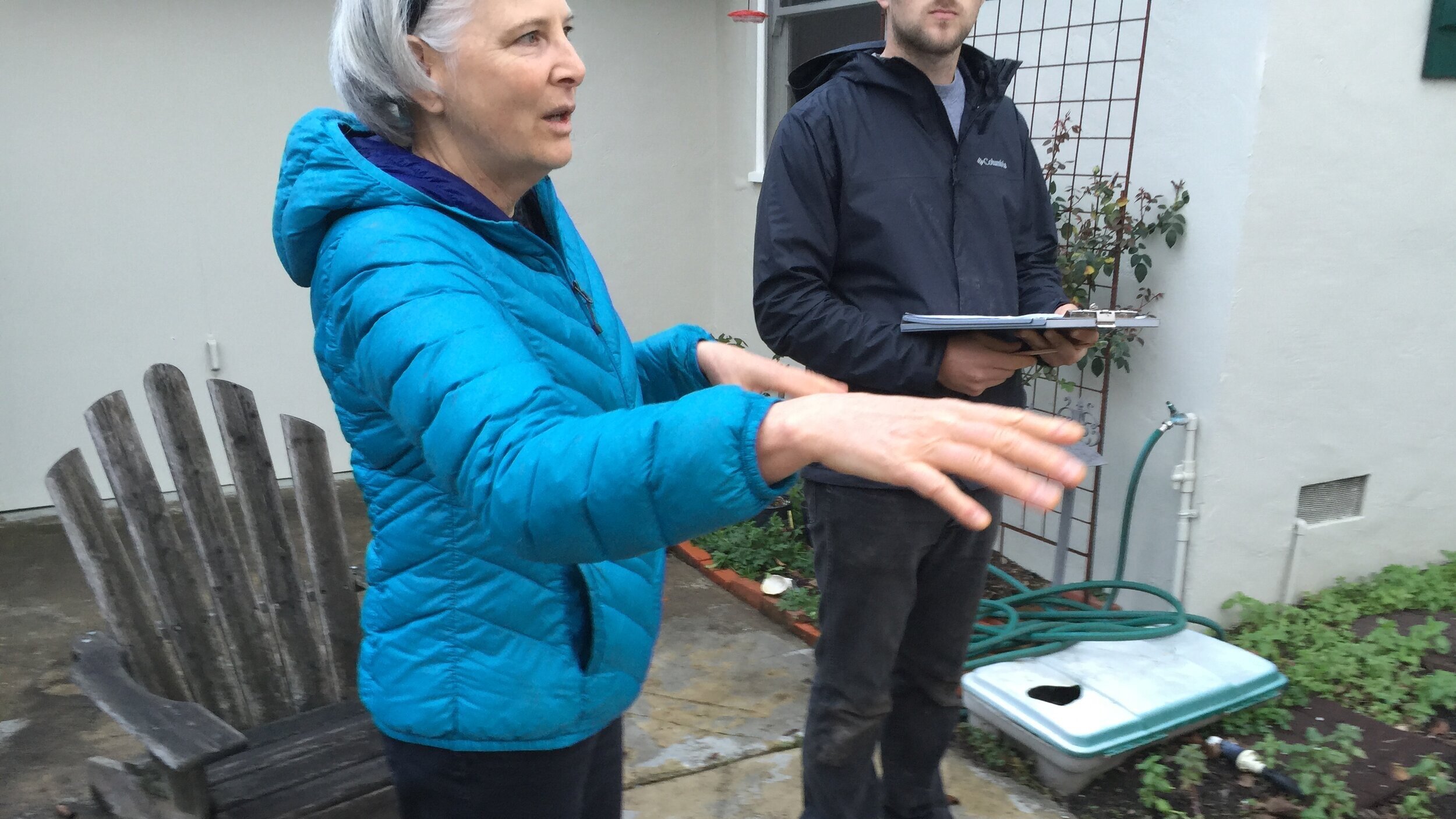
Evaluating Potential Sites
for Graywater Systems

Site specific
Design is the beginning of all successful graywater systems and requires unique consideration of domestic water use, existing plumbing arrangements, elevations, and plant water requirements.

Do what's appropriate for your context.
Different designs work for different situations and often more than one type of system is warranted on each site. Ask the questions below to gain deeper understanding into what type of system is appropriate for you.
A Site Plan for a Graywater System Design

What is your motivation for using graywater?

Save water.
Lower your potable water use for irrigation by replacing it with graywater.
Do the right thing.
Green design is good design, greywater is free resource that can and should be reused.
Stay prepared.
Have a reliable water source for irrigation during a drought or emergency.
Be efficient.
Reduce unnecessary flows to wastewater treatment plants and septic systems, and return vital nutrients to the soil.

Will gravity flow work on your site?

Graywater flows downhill.
If the area you want to irrigate is level or downhill from the elevation of your plumbing, then you can likely use a passive gravity feed to your advantage. Wastewater piping systems are designed to slope downwards continuously to prevent particles in the water from accumulating and clogging the system.

Greywater pumps uphill.
When the only areas you can irrigate are up hill you have no choice but to use a pump. Pressurizing the graywater with a pump adds to the cost and complexity of a system, but also affords you the opportunity to pump through a filter, use drip irrigation, and measure and control flows to a greater degree.

What do you want to irrigate?

Trees, shrubs or large plants
work well with low-tech systems because they use flood irrigation to “mulch basins” (that contain the surge of graywater). Plants with relatively large root systems benefit from that type of concentrated distribution. Graywater requires no filtration to be used with this method which makes low-tech systems very simple and low maintenance.

Small plants, lawn, or complicated landscape
needs a very broad and even distribution that can only be accomplished with graywater using drip irrigation. In order to pass through tiny drip emitters graywater needs to be filtered and pressurized which makes high-tech systems more complicated as filters need to be automatically self-cleaning to prevent rapid clogging.

What is your budget?

Simple works
Low-tech systems are reliable, save water, and have lower initial costs (≈$500 - $4,000) and low to no operating costs. The fact that they don’t rely on high-tech components and electricity to operate means they have a low environmental impact and their overall net benefit is high.

Complex works…sometimes
Because high-tech systems are able to use drip irrigation and control the water to a high degree they have the potential to offset significant quantities of potable water use (irrigation water out of the tap), which over time could offer a high return on investment for the more substantial initial costs (≈$1,500 -$8,500) of a high-tech system.

Can you fit a system within the required setbacks?

Setbacks for Outlets
Follow required setbacks for a code-compliant system.

What is your soil type?

Soil properties affect how water infiltrates
Soils drain and retain water depending on the soil structure and organic matter content. Clay soils drain the slowest but ultimately hold the most water. Sandy soils drain the quickest and hold the least amount of water, and Silt loams (which is texturally in the middle between Clay & Sand) hold the most plant available water. The “texture” of a soil is due to its relative proportions of the mineral particles of Sand, Silt, and Clay, which vary in the size of the particle with clay being the smallest and sand the largest particle. Organic matter acts like a sponge in the soil matrix and helps all soil types absorb and retain more plant available moisture.

Sizing Infiltration Areas
The area (square feet) of mulch basins needed is determined by dividing the estimated number of gallons produced per day by the soil type’s maximum absorption capacity (measured in gallons/sq2). Use Code Table 1602.10 at right for common soil types. See examples below for complete calculation for 2 different soil types with an estimated daily graywater production of 125 gpd.
Coarse sand or gravel: 125 gal/day / 5 gal/ft2/day = 25 ft2
Clay w/small amounts of sand or gravel: 125 gal/day / 0.8 gal/ft2/day = 156.25 ft2

How much Graywater will you produce?

Estimating Graywater Production
Using the Code formula (1602.8.1) requires knowing the number of bedrooms in the house, which determines the number of theoretical occupants:
1st bedroom = 2 occupants
Additional bedrooms = 1 occupant
Add up the total occupants and then multiply the total number of occupants by the estimated graywater production per-occupant accordingly:
Laundry = 15 GPD (gallons per day) per occupant
Showers, bathtubs, and wash basins = 25 GPD per occupant
See the example at right for a complete calculation process for a four bedroom house.

Helpful Resources
for Site Assessment
Oasis Design Printable Site Assessment Form:
https://watershedmg.org/sites/default/files/documents/greywater-site-assessmentsystem-checklist.pdf













